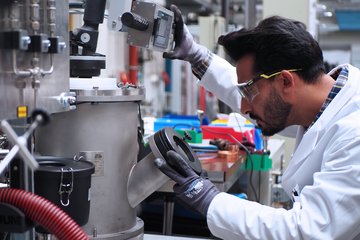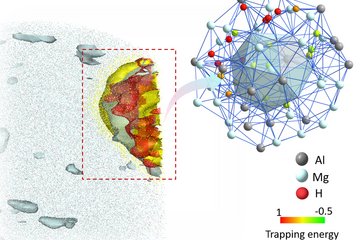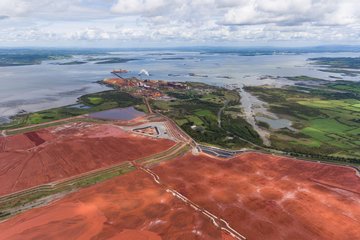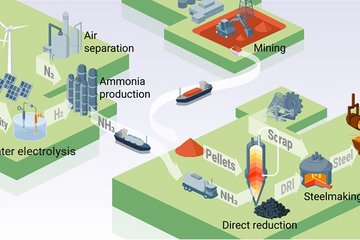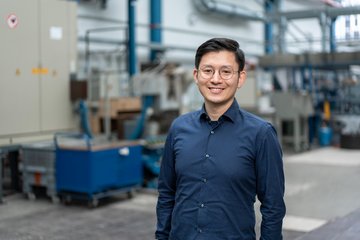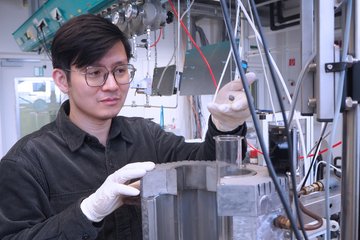Alle Typen
301.
Vortrag
Linear Complexions: Confined Chemical and Structural States at Dislocations in Metallic Alloys. MRS Fall Meeting & Exhibit, Boston, MA, USA (2015)
302.
Vortrag
Hydrogen Embrittlement and Sour Gas Corrosion in Oil and Gas Industry. Workshop: Hydrogen Embrittlement and Sour Gas Corrosion, Max-Planck-Institut für Eisenforschung, Düsseldorf, Germany (2015)
303.
Vortrag
Multi-scale characterization of ductile martensitic steels. Advanced Steels 2014, Madrid, Spain (2014)
304.
Vortrag
Segregation and phase transformation at dislocations during aging in a Fe-9%Mn steel studied by correlative TEM-atom probe tomography. MSE 2014, Darmstadt, Germany (2014)
305.
Vortrag
Segregation of boron at prior austenite grain boundaries in a quenched steel studied by atom probe tomography. Atom Probe Tomography & Microscopy 2014, Stuttgart, Germany (2014)
306.
Vortrag
Designing bulk nanostructured high manganese steels by intregrating advanced characteriation and ab initio modeling. 2nd International Conference on High Manganese Steels - HMnS 2014, Aachen, Germany (2014)
307.
Vortrag
Study of equilibrium segregation of Mn and reversion of austenite in tempered medium Mn steels and its influence on impact toughness. 2nd International Conference on High Manganese Steels - HMnS 2014, Aachen, Germany (2014)
308.
Vortrag
Nanostructure Manipulation by Segregation Engineering. 2nd ESISM International Workshop on Fundamental Issues of Structural Materials, Kyoto, Japan (2014)
309.
Vortrag
Strain and stress partitioning in ultrafine grained ferrite/martensite steel. TMS 2014, San Diego, TX, USA (2014)
310.
Vortrag
In-situ characterization of martensite plasticity by high resolution microstructure and microstrain mapping. ICOMAT 2014, International Conference on Martensitic Transformations 2014, Bilbao, Spain (2014)
311.
Vortrag
Deformation micro-mechanisms in medium-Mn TRIP-maraging steel. 2nd International Conference on High Manganese Steel, HMnS 2014, Aachen, Germany (2014)
312.
Vortrag
Deformation micro-mechanisms in novel TRIP-assisted martensitic-matrix steel. International Conference on Martensitic Transformations 2014, ICOMAT 2014, Bilbao, Spain (2014)
313.
Vortrag
Size effects on mechanical stability of metastable austenite. Thermec 2013, Las Vegas, NV, USA (2013)
314.
Vortrag
Size effects on mechanical stability of metastable austenite. SFB Klausurtagung, Hagen, Germany (2013)
315.
Vortrag
Mechanical stability of nano-sized reverted austenite in a reversion treated martensitic steel. Euromat 2013, Sevilla, Spain (2013)
316.
Vortrag
Size effects on austenite stability investigated by in-situ EBSD. BSSM 9th Int. Conf. on Advances in Experimental Mechanics, Cardiff, UK (2013)
317.
Vortrag
Embrittlement effect in medium Fe–Mn alloys. Study of grain boundary segregation. Euromat 2013, Sevilla, Spain (2013)
318.
Vortrag
Nanostructuring of bulk steels. International Conference on Computational Modeling of Nanostructured Materials - ICCMNM 2013, Frankfurt Institute for Advanced Studies, Frankfurt a. M., Germany (2013)
319.
Vortrag
The superplasticity evaluation of a Mn–Si–Cr alloyed steel at different microstructural and deformation conditions. Euromat 2013, Sevilla, Spain (2013)
320.
Vortrag
From defectant theory to nanoscale transformations in steels. Workshop on 'Current Challenges in Materials Physics' at Physics Faculty, University Göttingen, Göttingen, Germany (2013)
